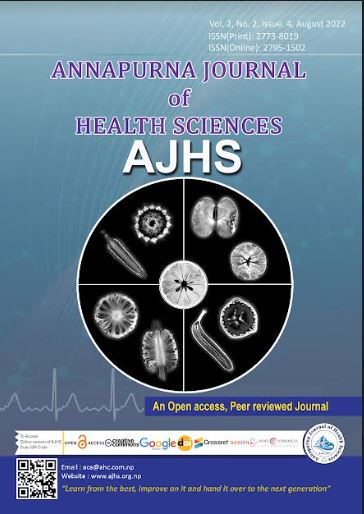A Study on Children Ever Born and its Associated Factors of Suddhodhan Rural Municipality of Rupandehi District, Nepal
Keywords:
Children ever born, fertility, populationAbstract
Background: Despite the several efforts made in the development plans to
reduce the population growth rate, the population of Nepal has rapidly been
increasing from last few decades. This study aims to find the associated factors
to have more than two children in Suddhodhan rural municipality of Rupandehi,
Nepal.
Material and Method: A cross sectional descriptive study was conducted in a
Suddhodhan rural municipality of Rupandehi district, Nepal among 440 ever
married women selected by using disproportionate stratified random sampling.
Chi Square test was used to find the associated factors to have more than two
children.
Results: The study found that mean number of children ever born on Suddhodhan
Rural Municipality of Rupandehi district, Nepal was 4.1. Among 440 women
included in the study, 57.27% women had more than two children. There was
statistically significant association between children ever born with religion, age
of women and husband, age at marriage, literacy rate of respondents and her
spouse, respondent occupation, knowledge of contraceptive methods, exposure
to mass media.
Conclusion: The study concluded that religion, age of women and husbands,
age at marriage, literacy rate of husband and wife, respondents occupation,
knowledge of contraceptive methods, exposure to mass media were the main
factors for determining the children ever born. Hence local level policy maker,
planner and stakeholders of local municipal office should focused on providing
informal education such as PraoudSikshya involving both the women and their
husbands, should provide the intervention related to contraceptive methods
through group discussion as well as through the use of mass media.
Downloads
Downloads
Published
How to Cite
Issue
Section
License

This work is licensed under a Creative Commons Attribution 4.0 International License.
This license allows reusers to distribute, remix, adapt, and build upon the material in any medium or format, so long as attribution is given to the creator. The license allows for commercial use.




